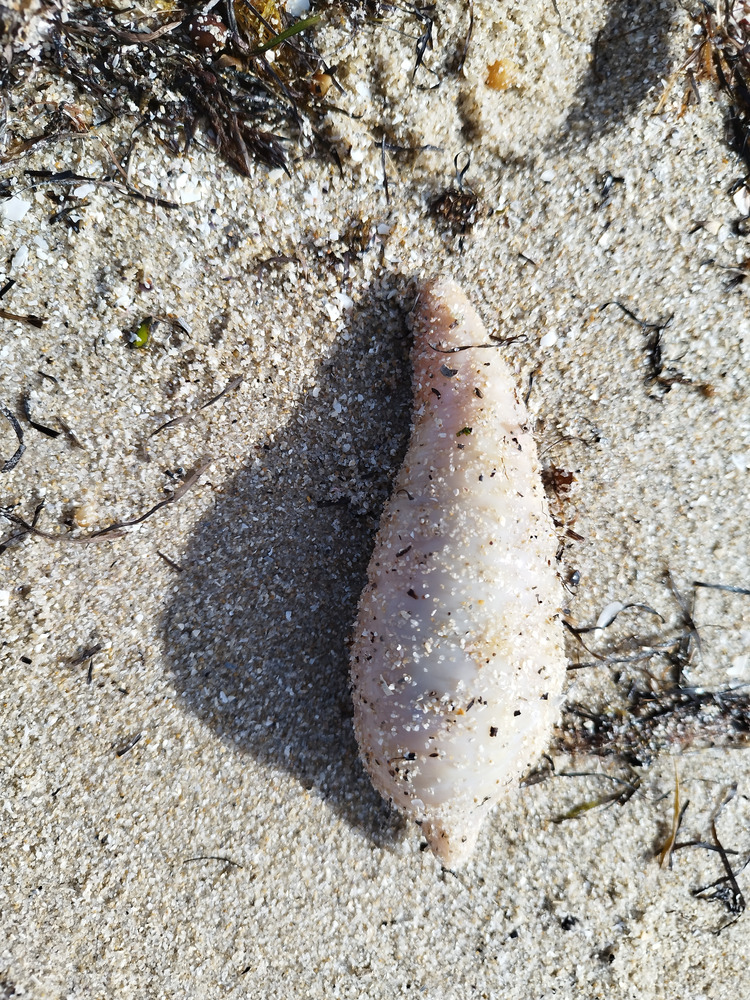mollwollfumble said:
I saw this critter washed up in Port Phillip Bay.
I haven’t a clue as to what it is.
It is axially symmetric or very nearly so, no hard parts.
It was very much alive, the ends shrank in axially when I touched it, and when I picked it up and moved it closer to the water’s edge.
It’s translucent.
Definitely not even remotely like a sponge.
The axial symmetry rules out mollusc and flatworm.
The lack of segmentation rules out annelid worms.
The movement rules out egg case.
The shape rules out jellyfish.
Lack of attachment point rules out tunicate.
That leaves only cnidarian and sea cucumber – and it doesn’t look like any of those that I’ve seen photos of.
So I’m totally stumped.


The egg sack above is created by a type of sea slug, Philine angasi. The family to which this species belongs, Philinidae, is known as headshield slugs, and they’re also sometimes called bubble shells.
Philine angasi feeds on bivalves and can grow quite large – up to 15 cm in length. If you’ve spent some time on local beaches and reefs you might be wondering why you’ve never come across one? While they occur widely in sheltered and open coastlines in southern Australia (up as far as NSW), they spend most of their time buried in the sand, only occasionally emerging to the sand’s surface at night. We only saw one egg mass during our reef ramble, but Rose has since been snorkelling close to this site and saw hundreds of the same egg masses in a small area!
Philine angasi has an internal shell that is delicate and transparent, and this is where the name bubble shell comes from. These shells are very fragile and because the animal lives mostly underground it is very rare to find one.
If you’ve found something interesting on the beach or reef, I’m always happy to hear from you! Click here to email me, or copy my email address below.
https://natureglenelg.org.au/species-of-the-month-bubble-shell/

